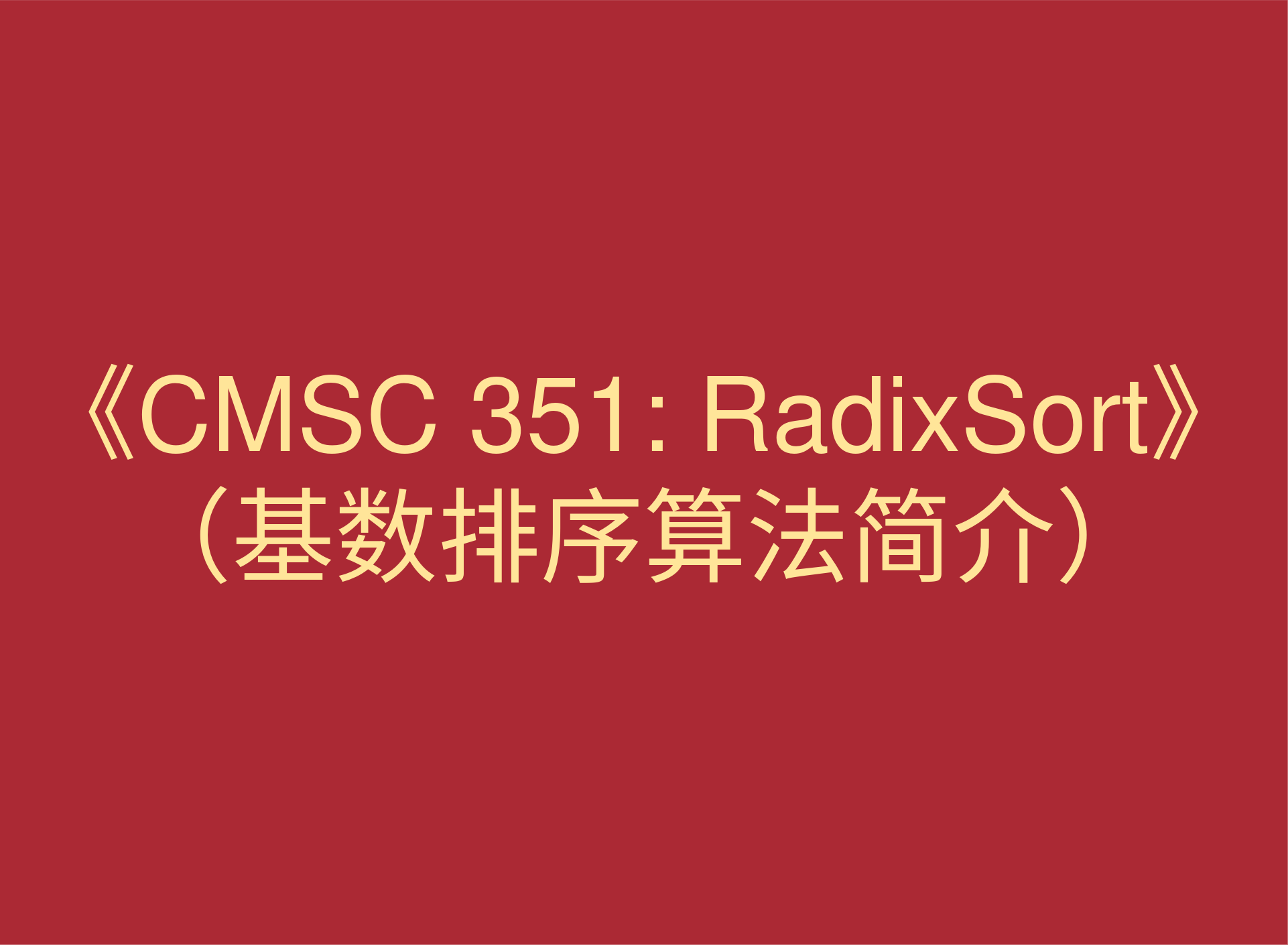
材料分享:《CMSC 351: RadixSort》(基数排序算法简介)
2025-03-24 发布148 浏览 · 0 点赞 · 0 收藏
在 PostgreSQL 哈希索引所参考的论文中,有涉及到基数排序的地方,因此我们找到一份对应的参考材料,用以辅助理解。
同时文章中的代码,我们也做了一定的修改(原文的代码在数字超出一定范围后,会排序失败):
import random
# This unstable version of counting sort
# sorts by the digit passed to it .
# digit = 1 ,10 ,100 , etc .
def countingsort (A, digit, longest_digit):
n = len(A)
# 存储新排序以后的数组
ANEW = [0] * n
# 根据最长位数,创建一个对应的临时数组,存储坐标信息
C = [0] * longest_digit
# 把每一个数字这轮排序中对应的位提取出来
for i in range (0, n):
sdigit = int((A[i]/digit)%10)
# 统计这个数字的出现次数
C[sdigit] = C[sdigit] + 1
for i in range (1, longest_digit):
# 统计这一位之前应该有多少位数字
C[i] = C[i] + C[i-1]
# 自 n-1 开始 递减到 0
for i in range (n-1, -1, -1):
sdigit = int((A[i]/digit)%10)
# 数组自 0 开始
ANEW[C[sdigit]-1] = A[i]
# 每放置一个,就 -1
C[sdigit] = C[sdigit] - 1
for i in range (0, n):
A [i] = ANEW[i]
def radixsort(A):
maxval = max(A)
longest_dight = 1
# 统计最长位数
d = 1
while d < maxval:
longest_dight = longest_dight + 1
d = 10 * d
# 一层层遍历
d = 1
while d < maxval :
print('\t' + 'Sorting by radix : ' + str ( d ))
countingsort(A, d, longest_dight)
print('\t' + '\t' + 'Result : ' + str(A))
d = 10 * d
# 构建原始数列
A = []
for i in range (0, 20):
A.append(random.randint(0, 100000000000))
# 开始执行 Radix Sort(基数排序)
print('Raw: ' + str(A) + '\n')
radixsort(A)
print('\n' + 'Result: ' + str(A))
请前往 登录/注册 即可发表您的看法…

